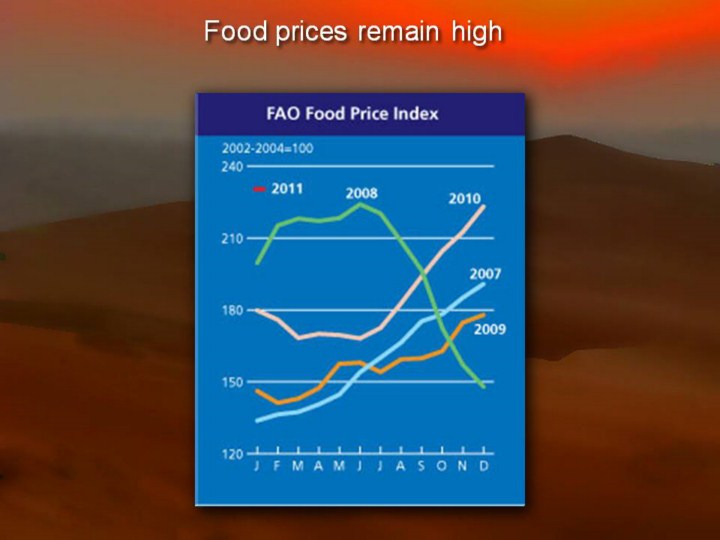 |
Early last
year, I got a note from Andy Revkin of the New York Times saying: “I'm
trying to make sense of this (meaning the FAO food price index) for my Times
Dot Earth readers and …you can help by providing your perspective. Is this
a reflection of the true limits to resources that Paul Krugman has been
inching toward in the last couple of years - with climate extremes
essentially waves lapping over the gunwales of a leaking boat? Or is this
likely to be another temporary slosh as the uneven pulses of demand, supply
and variegated conditions steadily create more pressure for productivity,
which is eventually provided...? Or will it never be possible to know the
difference until it's essentially too late?” End of quote. The global food
price crisis of 2008 took many people by surprise. When food prices came
down, many dismissed it as a speculative bubble……
|
